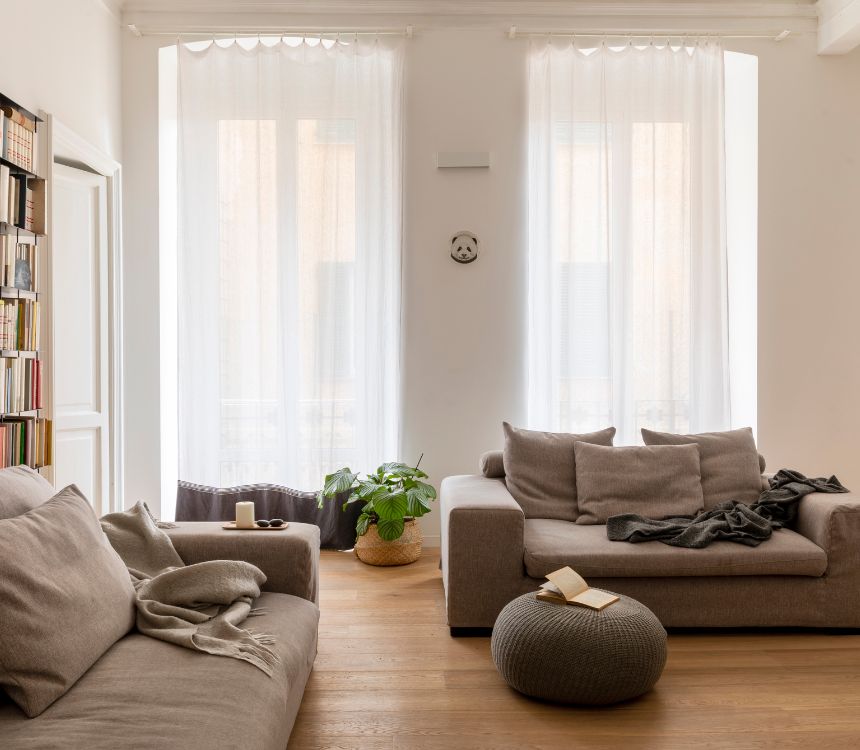If you’re looking to buy your council house through the Right to Buy scheme, one of the first questions that might come to mind is whether the property will be leasehold or freehold. It’s an important point to understand before you make any big decisions, as it affects your rights, responsibilities, and long-term costs.
Here’s what you need to know, explained clearly.
Freehold vs Leasehold – What’s the Difference?
Before diving into Right to Buy specifically, let’s clear up the basics.
- Freehold means you own the property and the land it’s built on outright. You’re responsible for everything – the building, the land, and all repairs.
- Leasehold means you own the property for a set number of years (the lease), but not the land it’s on. The freeholder still owns the land and the structure of the building. Leaseholders often pay service charges and ground rent.
Need help with your Right to Buy mortgage?
Get expert advice today.
So, Is a Right to Buy Property Leasehold or Freehold?
It depends on the type of property you’re buying.
1. Houses (Usually Freehold)
If you’re buying a council house, you’ll usually be offered the freehold. That means once the purchase is complete, you’ll own the house and the land it’s built on. You won’t have a lease or pay ground rent.
That said, not all houses are freehold. In some cases, especially in certain parts of the country, the council might sell the house as leasehold – typically with long leases (often 125 years or more). This can happen if:
- The house is in a block or part of a shared development
- The council chooses to retain some control over the land or shared services
If you’re not sure, always check the offer document carefully before signing anything.
2. Flats (Almost Always Leasehold)
If you’re buying a council flat or maisonette through Right to Buy, it will almost certainly be leasehold. The council (or housing association) will keep the freehold and grant you a lease – usually for 125 years.
As a leaseholder, you’ll have to pay:
- Service charges – for maintenance of shared areas, repairs, cleaning, lighting, etc.
- Ground rent – though this is often nominal
- Major works costs – these can be large if the building needs a new roof, lift repairs, or external cladding
Some leaseholders are surprised by the scale of these charges, so it’s vital to ask for a breakdown before you buy. You have a right to see past service charge statements and estimates for future works.
Why the Distinction Matters
The difference between freehold and leasehold has several important implications for Right to Buy purchasers:
Financial Considerations
- Leasehold properties come with ongoing costs that freehold properties don’t have. You’ll need to budget for:
- Ground rent (though many councils charge minimal amounts)
- Service charges for building maintenance and communal areas
- Potential major works contributions (for things like roof repairs or lift replacements)
- Buildings insurance (often arranged through the freeholder)
Future Sale Considerations
Leasehold properties can be harder to sell, especially if the lease has fewer than 80 years remaining. Mortgage lenders become increasingly reluctant to lend on shorter leases, which can limit your pool of potential buyers. You might need to extend the lease before selling, which can cost thousands of pounds.
Property Modifications
As a freeholder, you have much more freedom to modify your property (subject to planning permission). Leaseholders often need permission from the freeholder for significant changes, and some modifications might be prohibited entirely under the lease term.

Can Leaseholders Ever Buy the Freehold?
If you’re in a leasehold flat, you generally can’t buy the freehold on your own. However, if the majority of leaseholders in the block agree, you might be able to collectively buy the freehold – a process called enfranchisement.
For leasehold houses, the law often gives you the right to buy the freehold later, once you’ve owned the property for a few years.
Things to Watch Out For
- Short leases: If the lease has less than 80 years left, mortgage lenders may be reluctant. Always check the lease length.
- High service charges: These can catch you off guard, especially with older blocks.
- Major works bills: Councils can charge leaseholders thousands for major improvements, like roof replacements or external insulation.
Always get legal advice and, ideally, a surveyor’s report to understand what you’re buying into.
FAQs
Yes, you can choose not to go ahead with the purchase if you’re unhappy with the leasehold terms. You’re under no obligation to buy after applying. Take time to review the lease, ask questions, and seek advice before you decide.
In most cases, yes – but the amount is usually small. Ground rent is a fixed annual payment to the freeholder. However, this may change in future as leasehold reforms progress in the UK.
They can be. As a Right to Buy leaseholder, you may have to contribute to the maintenance of the whole building or estate. Charges vary by council, so always request a breakdown before you buy.
Yes. If you own a leasehold Right to Buy property, you can usually apply to extend the lease after two years. This is especially important if your lease is under 90 years.
Most councils offer a 125-year lease for Right to Buy flats. This is standard across the UK. The lease length starts from the date the first flat in the block was sold, so check how many years are left before you proceed.
You’ll be responsible for repairs inside your flat. The council or housing association remains responsible for the structure and communal areas – but you’ll pay your share through service charges.
It depends on the lease terms, service charges, and future maintenance plans. Some buyers find it worthwhile, especially with the discount, but others face unexpected costs. Always check the lease and ask for estimates of future works.
Yes, you can sell it just like any other leasehold property. However, if you sell within 5 years, you may have to repay some or all of the discount you received. This is called the “Right to Buy discount repayment”.
Yes. The council usually retains the freehold of the building and common areas. That means they’ll still be responsible for managing the block – and you’ll need to pay your share of the costs.
A leaseholder owns their home for a set time but not the land or building structure. A freeholder owns the property and land outright. With Right to Buy, your status will depend on whether you buy a flat (leasehold) or a house (usually freehold).
Continue Reading
What Is different about a Right to Buy mortgage?
Right to Buy mortgage with no deposit
Right to Buy mortgage with an IVA
Right to Buy mortgage on a property or ex-council flat with deck access
Mortgage for purchasing a Right-to-Buy council house
Right to Buy mortgage for Tower Hamlets Council
Finding the Right to Buy mortgage brokers or advisers in Worksop
Right to Buy: A guide to buying your council home
Do you need a mortgage for Right to Buy?
Can I get a buy-to-let mortgage on a Right to Buy Scheme?
Can you use a Guarantor for a Right to Buy mortgage?
Do you need a special mortgage for Right to Buy?
Joint mortgage with bad credit
First-time buyer mortgage with bad credit
Remortgaging a Right to Buy property
How much deposit do I need for a mortgage on a right to buy?
Mortgage on a leasehold property
How to Find the best mortgage brokers for Right to Buy applications
What you need to know before buying a Right to Buy property?
Right to Buy mortgage brokers London
Do I need a deposit to Buy my council house?
Right to Buy mortgages with bad credit
Does my name have to be on the mortgage for a Right to Buy?
Can I get a Right to Buy Mortgage on £210 per week?
Can you let your Right to Buy property?
Housing association Right to Buy: What you need to know
